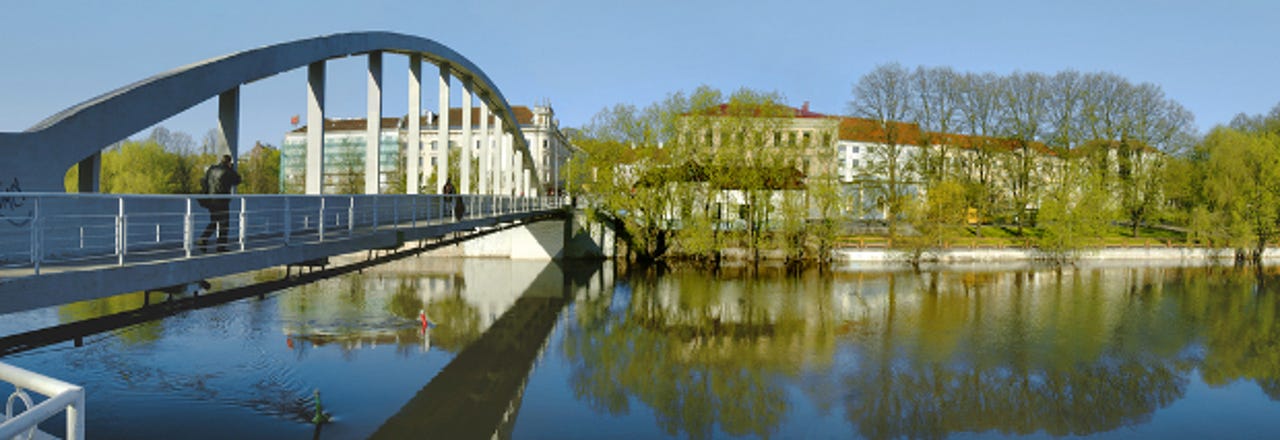4G in Europe: How far, how fast and how much is LTE in Estonia?


Although two of the three major mobile operators in Estonia are already offering 4G, coverage is limited and significant uptake is still years away.
There are three big mobile operators in Estonia: EMT, owned by Sweden's TeliaSonera; Tele2 owned by a Swedish telco of the same name; and Elisa, a local subsidiary of a Finnish telco.
The first of the three to roll out a 4G network in Estonia was EMT. LTE services went live in December 2010 on what was only the 11th such network in the world at the time. It took the company one year to cover all the major towns in Estonia and EMT claims that it now has 70 percent of the population and 35 percent of the territory in Estonia within range of its 4G network. It expects the whole territory to be covered by 2014.
EMT is currently offering a number of 4G packages, with download speeds varying from 8Mbps to 100Mbps (the download speeds are the theoretical maximums; in reality speeds are significantly slower, for all the reasons you'd expect) and the monthly fees from €15.94 to €120. Data usage is unlimited on the most expensive package, while all the others have a 30GB per month cap. Should customers exceed their data limit, their download speed is cut down to 120Kpbs until the end of the month.
The second operator to come to the local 4G market was Tele2, which launched its network in November 2012. According to Tele2, its network covers most of the major towns in northern Estonia, as well as Tartu in the south, and the operator plans to expand the coverage to other important regional centres in 2013. The company has promised to have the whole of Estonia covered with 4G in 2017. At the moment, Tele2 has three different packages, priced between €10 to €30 per month with data limits of between 5GB and 30GB. After reaching the limit, customers' speed, the same in all packages — a theoretical maximum of up to 150Mbps — will be cut down to 200Kbps.
The third operator, Elisa, only unveiled its own 4G offerings earlier this month. Its network covers all the bigger cities — around 75 percent of the population — with packages priced between EMT's and Tele2's. The cheapest package costs €13 per month with download speeds of 8Mbps and a 50GB data limit. The next package up costs €23 per month (50 Mbps and 50GB limit) while the third one costs €40 per month (100 Mbps, no limit). All of the packages are for data devices such as tablets, while smartphone packages are expected to be released by the end of the current quarter.
Elisa was last to market with 4G as it had to wait for the state to hand out the licences for 800MHz spectrum, which the company wants in order to build higher quality networks in rural areas and also to provide better in-building coverage. Tele2 and EMT are using the 1800MHz and 2600MHz frequencies, but are also very interested in 800MHz and are planning to use it parallel to the higher-frequency bands.
Awarding the 800MHz licences has been delayed because of the co-ordination of negotiations with Estonia's neighbours Russia and Latvia.
Neighbours with spectrum
Latvia is going to continue to use the 800MHz frequency band for digital television broadcasting in the next year, according to a spokesman for the Ministry of Economic Affairs and Communications, while Russia has also shown interest in using it for 4G recently, which means that the conditions of existing agreements may have to be reconsidered or new agreements made. "Negotiations with the countries are still going on, but we hope that we can give the 800MHz frequency licences to the interested operators in the first half of the year 2013," the spokesman said.
Right now, most 4G services are available as data packages, and so consumers can only use them with devices such as dongles, routers and tablets. However, EMT last month began offering 4G for smartphones as well, on a new €29.95 per month "4G for the smartphone" package with speeds up to 50Mbps and a data limit of 15GB. Tele2 is also expected to add 4G plans for smartphones before too long.
"Because 4G LTE was originally created for data communication, there still isn't a worldwide standard for voice calls over 4G LTE networks, so mobile phones have to switch themselves back to the 3G network, when starting and finishing calls," head of technology for EMT Tiit Tammiste explained. "This requires a specific network quality called CS Fallback."
The technology director of Tele2 Estonia Mart Nielsen said that because of the lack of dependable 4G smartphones, Tele2's 4G service is at first oriented only for the data communication and multimedia devices. "LTE mobile phone technology will gain the sufficient maturity and availability probably in the first half of 2013," he added.
4G in Estonia is still pretty much in the development phase at the moment — with second-place operator Tele2 only offering 4G services for a matter of weeks, and third-place Elisa poised to enter the market — there aren't too many devices available and their prices are quite high. However, it's still probably safe to say that the interest of consumers in Estonia is only going to grow in the next few years, and more than likely, grow rapidly.
Although it hasn't made the number of its 4G customers public, EMT claims that in November 2012, 55 percent of its new customers on its mobile internet packages chose a 4G option. So, customers' interest in 4G seems to be there, the operators just have to keep up with it, develop the networks and help more devices to enter the market. And, like many of their European counterparts, they have to wait for the right spectrum licences to come along.